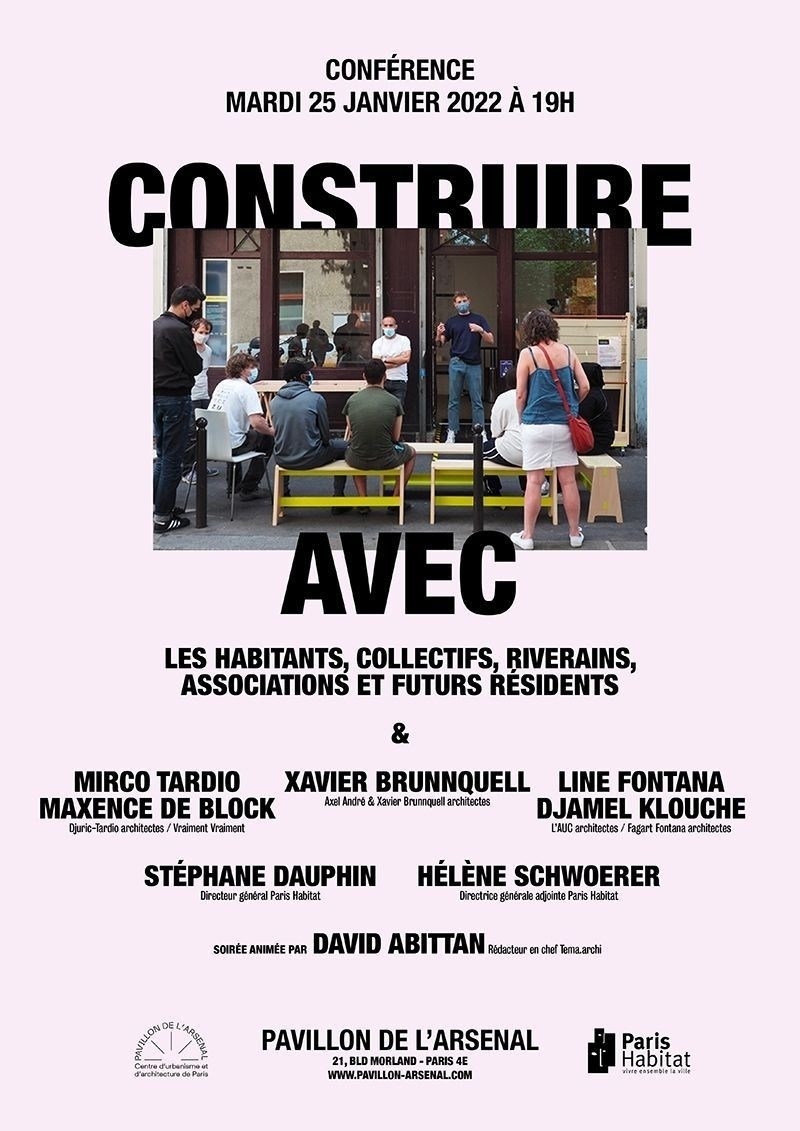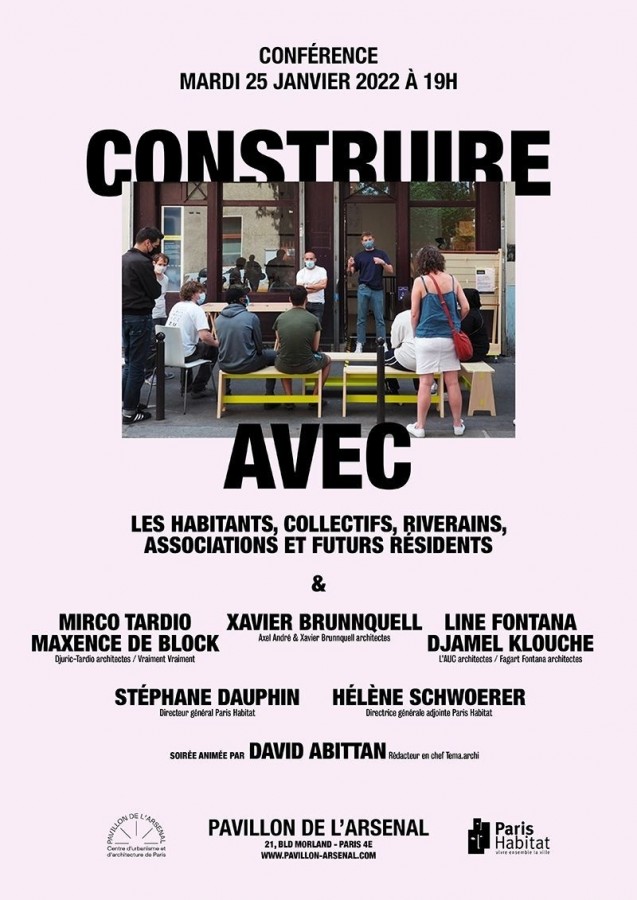How can we improve housing buildings with those who already live in them? What tools should be developed to meet everyone's expectations and the necessary improvements for all? Can we design a common habitat but tailored to these tenants? How can we co-design with the associations that animate the neighborhoods, the young people to be housed tomorrow, the seniors already there, the children or their families whose expectations are evolving?
The debate "Building with" proposes to explore, with the project owner, the architects and those who live there, the processes implemented in three urban transformation operations carried out by Paris Habitat - Tour des Poissonniers, Paris 18 / HBM Alphonse Karr, Paris 19 / HBM Sthrauh, Paris 13 - in order to share experiences and find collective modes of design.
Stéphane Dauphin - Managing Director of Paris Habitat
Hélène Schwoerer - Deputy Director General of Paris Habitat
7:15 - 8:30 p.m. - Debate on three current operations in Paris
Transformation of the Poissonnier Tower, Paris 18
Line Fontana - Fagart Fontana architects,
Djamel Klouche - L'AUC architects
and future residents
Renovation of the HBM Alphonse Karr, Paris 19
Mirco Tardio - Djuric-Tardio architects
Maxence De Block - Vraiment Vraiment
and the tenants
Transformation of the HBM Sthrauh, Paris 13
Xavier Brunnquell - Axel André & Xavier Brunnquell architects
and the collective of inhabitants
Debate moderated by David Abittan, editor in chief, tema.archi
AUC, Fagart Fontana, Mosbach Paysagiste, Arcadis, Bmf, Rotor, Link, Aha, Lasur, Medieco, Urban Eco
« The transformation of the Poissonniers Tower, an emblematic work by Raymond Lopez, is an opportunity for an ambitious architectural and landscaping project that aims to rethink student and young worker housing in light of student evolution and their place in contemporary society. In this constrained space, but emblematic of a history of modern Parisian architecture, we sought to design a Social, Civic and Environmental Infrastructure_Architecture that would give meaning to living together. To accompany this ambition, the project integrates a part of co-production, in this case a process of dialogue and collective reflection around the strong points of this new model of student housing. Co-production concerns all the phases of the project's creation: its genesis (the construction of the project) as much as the future life of the building. »
– AUC
HBM ALPHONSE KARR, Paris 19
Djuric Tardio Architects, Vraiment Vraiment, Bollinger & Grohmann, Elements Ing, Vpeas
« The renovation of the Alphonse Karr Group has the ambition to transform and adapt heritage buildings to contemporary ways of living while respecting the history and culture of each inhabitant. The challenge is to reconcile the social rehabilitation of an inhabited complex with the requirement of good environmental performance. The consultation with the inhabitants takes the innovative and convivial form of Café-Ateliers. Plans of all the apartments and common spaces were annotated with the comments of the residents and janitors and then posted for all to see. We also designed models of the different typologies and brought the residents to take ownership of the layout, framing the design with colored elements corresponding to precise rules (bioclimatism, technical constraints, wet rooms, minimum storage space, etc.). This work of diagnosing usage in collaboration with our partners Vraiment-Vraiment, allowed us to collect a large database, a source of inspiration for the design of the new housing for the residents, by the residents. »
– Djuric Tardio Architects
HBM STHRAUH, Paris 13
Axel André & Xavier Brunnquell Architects
« The challenge of the project, located at 5 rue Sthrau in the 13th arrondissement, is the renovation of one of the "first eleven" Parisian HBMs built a century ago, experimental buildings known as "insertion" buildings intended to absorb the insalubrious housing of the former fortified enclosure. The work program for the 120 occupied housing units deals as much with technical and thermal improvements as with the question of comfort and habitability. The resulting architectural choices were determined on the basis of a concerted effort, carried out in situ, which consisted of a survey of each situation, "120 little stories of rehabilitation", 120 meetings with residents considered to be experts in their uses, or how to design a project starting from the inside. »
– Axel André & Xavier Brunnquel










